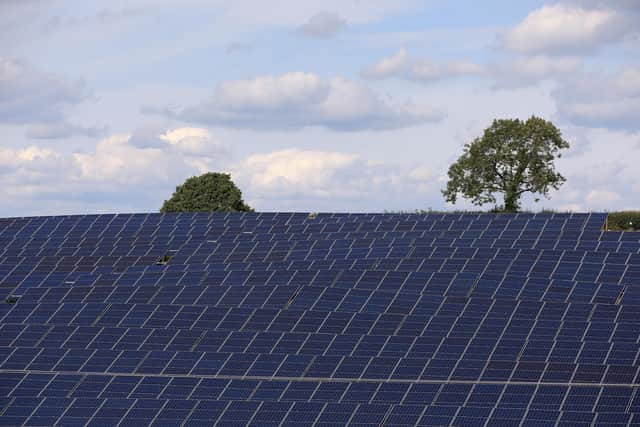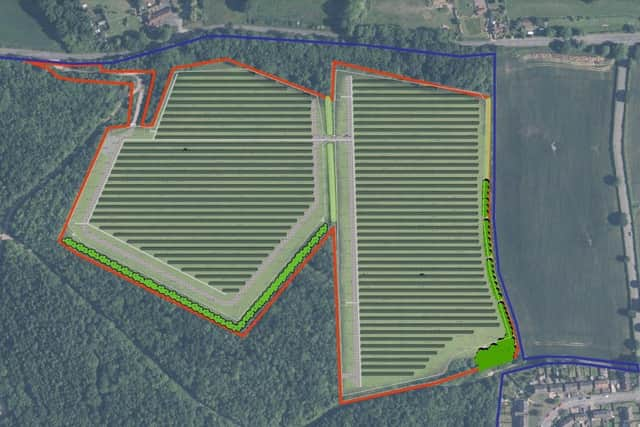Cash-strapped Derbyshire council submits plans for £3.75 million solar farm near nature reserve
and live on Freeview channel 276
Derbyshire County Council, which has a budget shortfall this year of £40 million, is looking to build a 25-acre solar farm next to the Williamthorpe Nature Reserve, off Mansfield Road, between Chesterfield and Bolsover.
The plan would see 14,000 solar panels installed on two agricultural fields – historically a former colliery – to the east of the nature reserve, between Holmewood and the A617. A decision will be made by the county council itself in the next few months.
Advertisement
Hide AdAdvertisement
Hide AdThe county council, which has had to impose a hiring freeze and a block on all non-essential spending since September, is set to spend £3.75 million on the Williamthorpe solar farm. To date it has spent £31,000, the council detailed earlier this month.


The scheme was delayed by six months due to a council review of “funding allocations and project approvals”. It had aimed to have the project built by April 2025 and says it hopes to have planning permission by June this year – in six weeks’ time.
The Williamthorpe site – a former reclaimed colliery – is the only plot out of the potential 15 sites identified by council consultants in 2022 which has an historic planning approval dating back to spiked council plans in 2015.
Three other sites are said to have been marked as “priorities” for development as part of that assessment, but for the remaining 11 there are issues in securing a grid connection to make them viable – which could prove much more costly. The application says the site lies outside of the Holmewood settlement boundary and is considered “development in the countryside”.
Advertisement
Hide AdAdvertisement
Hide AdIn late 2021, Cllr Barry Lewis, leader of the county council, said rooftops on industrial sites and warehouses would be better suited for solar development, instead of “taking up space in the countryside”.


The application details: “The proposed development has an important role in the council’s overall green programme. Derbyshire County Council has set targets for reaching a position of net zero, demonstrating the authority’s understanding and commitment to playing its role in tackling the global challenge of climate change.
“In setting this goal to strive towards carbon neutrality for its direct activities, the council recognises that there are a number of different ways in which this can be achieved. These include the reduction of energy consumption as far as possible across the corporate estate, the improvement of energy efficiency in the council’s buildings and the generation of renewable energy that can be used to run council services.
“However, it was also recognised that if the council continued to provide direct services to the public it would never reach a position of pure zero emissions. This means that it would instead have to rely on carbon offsetting to reach its target of net zero.
Advertisement
Hide AdAdvertisement
Hide Ad“In order to do this the council would need to either buy carbon offsets externally or put forward proposals for projects that would generate wholly new sources of renewable energy. This project is one of the first projects of this type to come forward.”